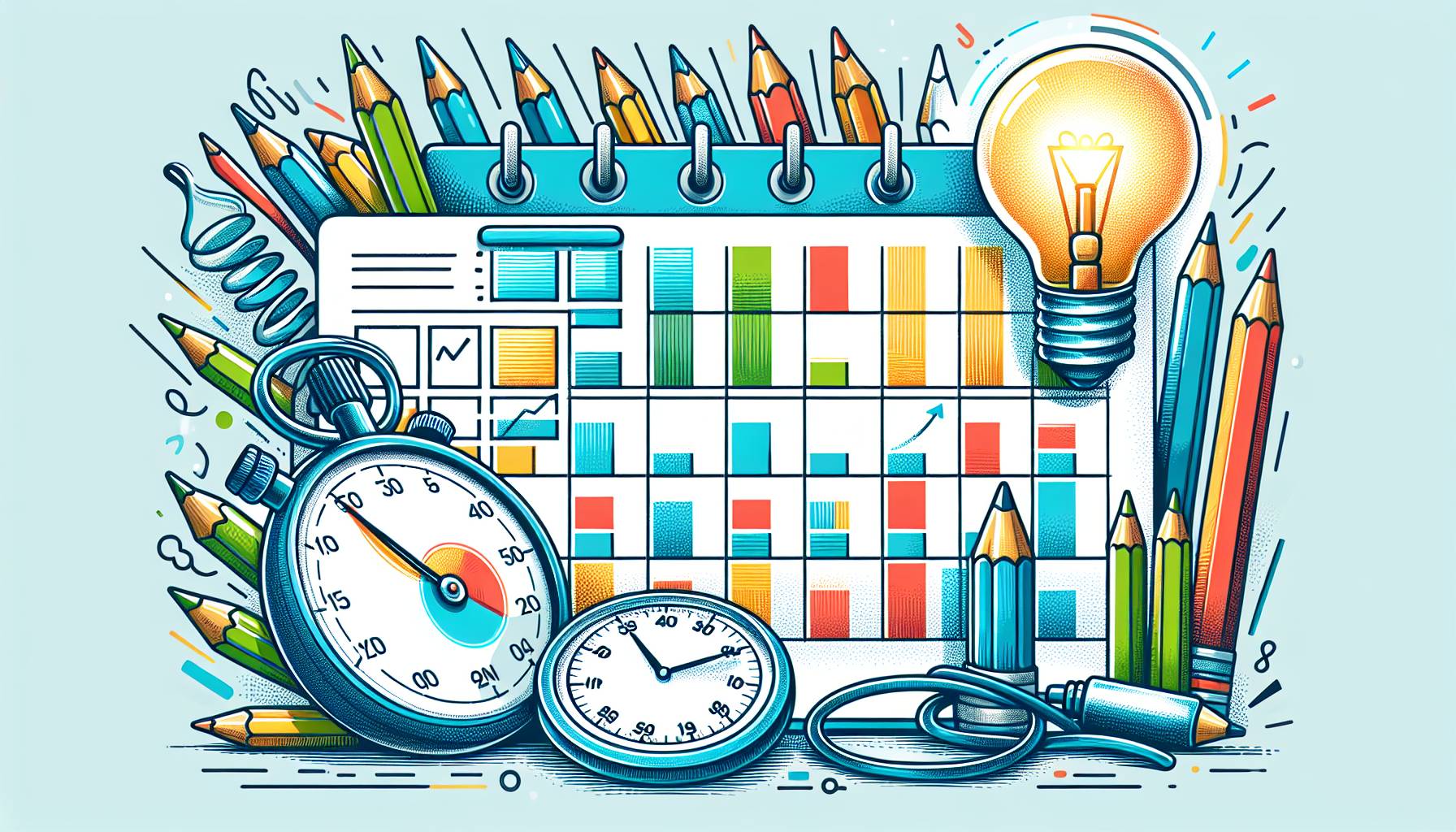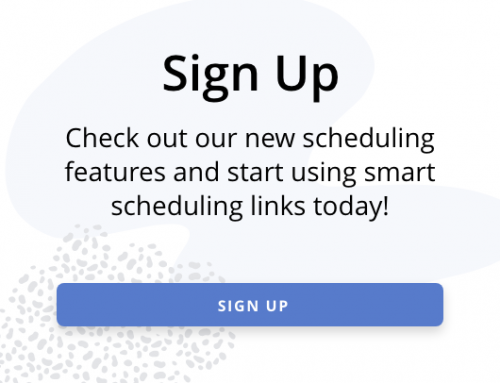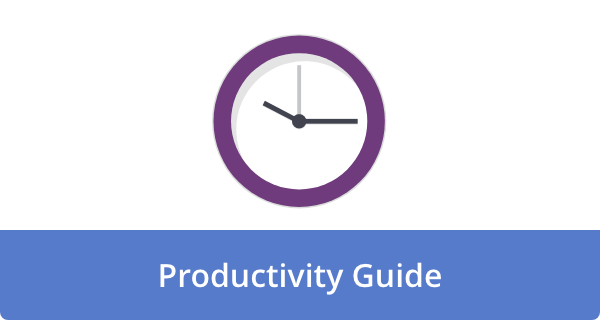

Make productivity progress with Time Blocking 2.0: Advanced Tactics for Enhanced Productivity, helping you with your time management strategies, changing the way you work and live. Time Blocking 2.0 and explore the incorporation of work breaks and flexibility into your routine. Uncover the secret of utilizing task batching for laser-sharp focus and dive into the advanced world of technology and time blocking apps that synergistically boost efficiency.
The Evolution of Time Blocking 2.0
Innovative strides have been taken to refine time blocking methods, paving the way for Time Blocking 2.0. By enhancing its original core strategies, professionals and individuals from various backgrounds can reap the benefits of improved efficiency and productivity. For instance, proponents of Time Blocking 2.0 have integrated technology and applications to customize workflows and keep track of tasks. Pomodoro Technique apps and calendar integrations allow for seamless allocation of work slots, empowering users to allocate dedicated time chunks to prioritize essential tasks, meetings, and breaks.
Transitioning to Time Blocking 2.0 also entails incorporating more flexibility into one’s schedule, accommodating unforeseen circumstances and urgent tasks that may arise. The key to mastering this updated approach is striking the perfect balance between structure and adaptability, leaving ample buffer time between tasks to prevent overcommitment and burnout. Furthermore, Time Blocking 2.0 promotes regular review and adaptation of one’s schedule, ensuring that goals remain aligned with daily workflows and improving overall time management efficacy.
Incorporating Work Breaks and Flexibility
Integrating work breaks and flexibility into your time blocking routine can significantly improve productivity while maintaining your well-being. Studies have shown that incorporating short breaks of about 10 to 15 minutes every hour can boost creativity, prevent burnout, and help stay focused on tasks longer. As you know, the Pomodoro technique recommends working in bursts of 25 minutes, followed by a short break, which eventually leads to increased efficiency. Do not hesitate to adjust your schedule as needed to accommodate personal preferences and accommodate unexpected interruptions, as flexibility ensures a more realistic and successful implementation of your time blocking strategy.
Strategic flexibility can be achieved by incorporating buffer zones in your time blocking schedule, which will allow you to handle unexpected events without severely impacting your plans for the day. These buffer zones can vary from half an hour to an hour, depending on the complexity of your tasks and the level of uncertainty in your daily routine. Additionally, be sure not to overstuff your calendar with tasks, leaving some room for longer breaks and personal time. Finding the right balance between focused work sessions and well-timed breaks will empower you to take control of your day.
Utilizing Task Batching for Improved Focus
Task batching is a game-changer when it comes to maintaining focus and skyrocketing your productivity. By grouping similar tasks, you can minimize distractions and optimize the time spent on each activity. For example, if you have multiple emails to respond to, a few phone calls to make, and several spreadsheets to update, you can batch these tasks into separate time blocks and focus solely on one type of task during each time block. This provides you with a rhythm and reduces the mental effort required to switch between different types of tasks, thus improving overall concentration.
A study conducted by the American Psychological Association shows that multitasking can lead to a productivity loss of up to 40%. Using task batching to create dedicated time blocks helps combat this issue, as you’re essentially “single-tasking” within each time block. For instance, if you allocate the first hour of your day strictly to email correspondence, you can then move on to another batch, like making phone calls with full attention and a clear mind. Similarly, creatives can block designated times for brainstorming, designing, and editing. By implementing task batching, you will be well on your way to more focused and efficient work sessions, ultimately revolutionizing your productivity levels.
Technology and Time Blocking: Apps and Tools for Extra Efficiency
Technology can significantly elevate your time blocking game, granting you the power to maximize efficiency and maintain a steady workflow. There are tons of blocking apps and tools that have emerged to cater to varying individual needs, thus integrating them into your routine is a surefire way to make time management a breeze. Several prominent applications include Todoist, Focus@Will, and RescueTime. Todoist facilitates organized task management by color-coding your tasks and projects, while Focus@Will couples productivity-enhancing music with a timer to ensure that you remain deeply immersed in your work. RescueTime, on the other hand, monitors your computer usage and generates weekly reports, thus allowing you to pinpoint potential time-wasting habits and address them in a timely manner.
As you explore the realm of time blocking technology, it is crucial to identify tools that truly complement your unique working style. Time blocking and productivity-focused wearables, such as the Apple Watch, Fossil Hybrid Smartwatch, or the Fitbit Versa 2, are suitable choices for those keen on seamless integration between method and function. Additionally, browser extensions like StayFocusd and Forest help you quash distractions that arise when working on a computer. Unearthing such remarkable applications can dramatically enhance your time management, empowering you to achieve the elusive perfect balance between work and play.
Measuring Progress and Continuous Improvement
Measuring progress and continuous improvement is vital in taking your time blocking techniques to the next level. To do this effectively, start by setting specific, measurable goals aligned with your desired outcomes. For instance, you may aim to complete three major tasks each day, or increase your weekly billable hours by 10%. Throughout the week, review your accomplishments and compare them with your initial objectives. Use productivity tools, like Toggl or RescueTime, to analyze your time spent and task completion rates, as they can provide valuable insights into your performance. Celebrate your achievements when you reach your goals and adjust where needed for better results.
One effective way of measuring success is through the use of feedback loops, which allow you to evaluate past performance and incorporate learnings for future improvement. A feedback loop involves documenting your time management performance, reviewing the data, reflecting on it, and adjusting your time blocking strategies accordingly. This continuous improvement process enables you to fine-tune your time blocking approach and ensures you keep moving closer to your goals. Another helpful tip is to identify any distractions or obstacles hindering your productivity. Once acknowledged, adjust your time blocking technique to mitigate or eliminate these issues. Remember, the key to mastering time blocking 2.0 is embracing flexibility and adapting your tactics based on the insights gathered through measuring progress and prioritizing continuous improvement.
Closing Thoughts
Time Blocking 2.0 transcends traditional productivity techniques by incorporating advanced tactics such as work breaks, flexibility, task batching, cutting-edge technology, and tracking progress for continuous improvement. By embracing this revolutionary approach, individuals and businesses alike can optimize their time management, enhance focus, and drive overall performance. Ultimately, Time Blocking 2.0 offers an invaluable strategy for maximizing productivity and achieving success in our fast-paced, ever-evolving world. So, it’s time to gear up and make the most out of every moment by employing these efficient techniques in your daily routine for tangible, remarkable results.
Frequently Asked Questions
What is Time Blocking 2.0?
Time Blocking 2.0 is an advanced time management strategy that focuses on enhancing productivity by incorporating work breaks, flexibility, task batching, technology, and continuous improvement into your daily routines. The evolution of time blocking involves three core components: technological integration, flexibility within structure, and continuous reassessment.
How does incorporating work breaks and flexibility enhance productivity?
Integrating work breaks and flexibility into your time-blocking routine can significantly improve productivity while maintaining well-being. Short breaks can boost creativity, prevent burnout, and help maintain focus on tasks longer. Flexibility ensures a more realistic and successful implementation of your time-blocking strategy by allowing adjustments for personal preferences and unexpected interruptions.
What is task batching, and how does it improve focus?
Task batching is the technique of grouping similar tasks together and completing them in dedicated time blocks. This minimizes distractions, optimizes time spent on each activity, reduces mental effort required to switch between different types of tasks, and enhances overall focus and concentration.
What are some useful time-blocking apps and tools?
There are several time-blocking apps and tools available to suit individual preferences, including Todoist (task management), Focus@Will (productivity-enhancing music and timer), and RescueTime (computer usage monitoring and reporting). Additionally, productivity-focused wearables and browser extensions like StayFocusd and Forest can help maintain focus and minimize distractions.
How can I measure progress and continuously improve in time blocking?
Measuring progress and continuous improvement involves setting specific and measurable goals, regularly reviewing accomplishments, and adjusting your time-blocking strategies accordingly. By using productivity tools like Toggl or RescueTime, you can analyze your time spent and task completion rates. Embrace flexibility and adapt your tactics based on insights gathered through measuring progress and prioritizing continuous improvement.











Abby Miller
Student at UC Berkeley, currently working on a degree in Electrical Engineering/Computer Sciences and Business Administration. Experienced in CSX, productivity management, and chatbot implementation.